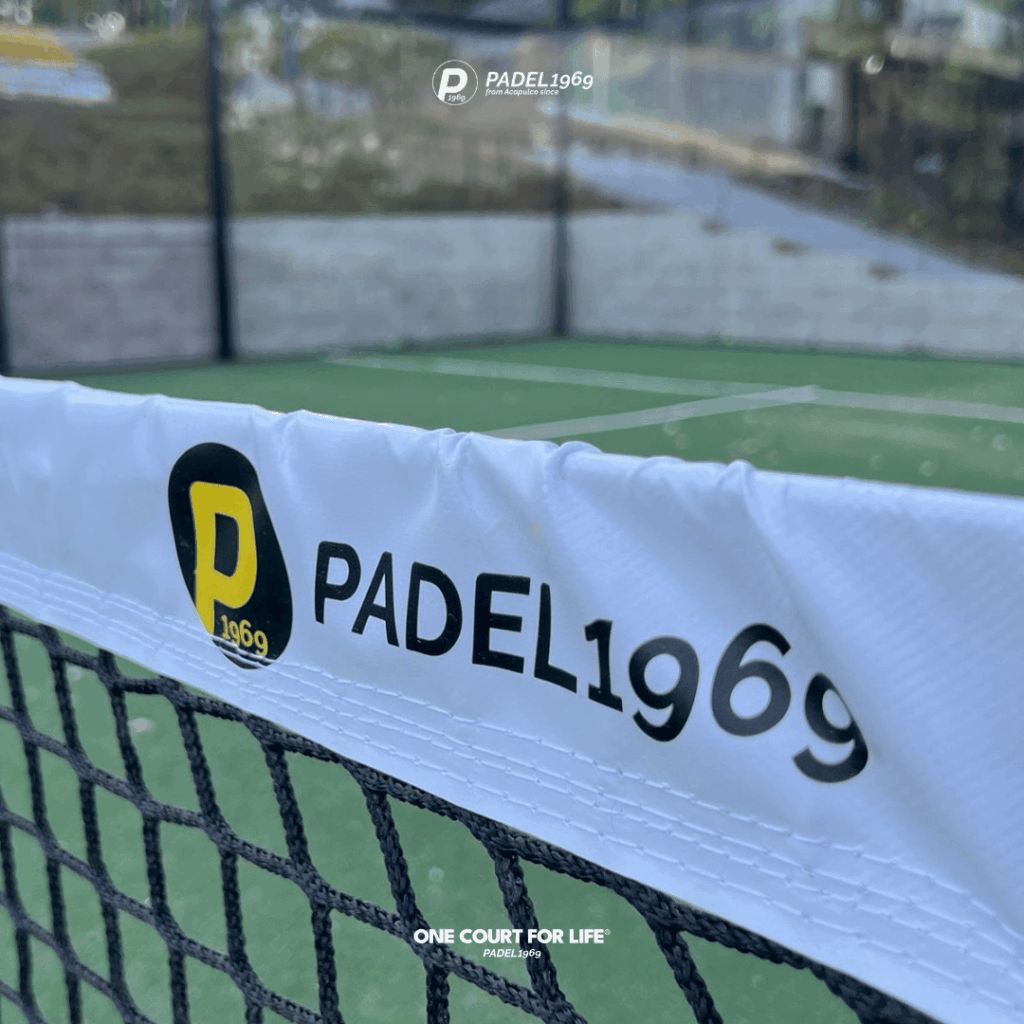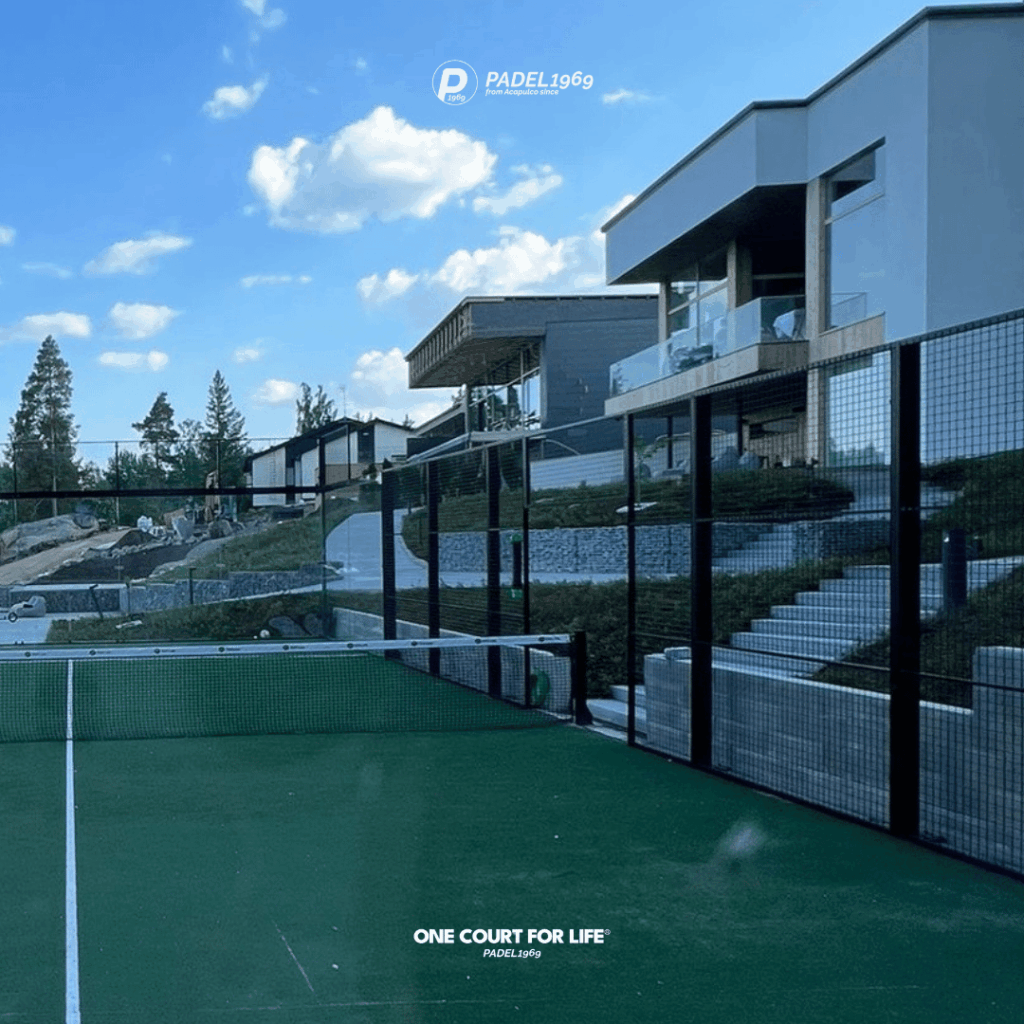The sport of padel has experienced explosive growth across Europe, Africa and beyond, evolving from a niche pastime to one of the fastest-growing racquet sports in the world. While public clubs and commercial facilities have proliferated to meet demand, discerning property owners are discovering the unparalleled advantages of installing a private padel court on their estates. This comprehensive guide explores everything you need to know about investing in a premium private padel court, from initial considerations to long-term value creation.
At PADEL1969 we have an honour to be trusted brand for multiple High-Net-Worth and Ultra-High-Net-Worth people by delivering bespoke padel courts to meet their individual needs and preferences.
Why Private Padel Courts Are Transforming Luxury Properties
The decision to install a private padel court represents far more than adding a sports facility to your property. It’s an investment in lifestyle, wellness, and property value that pays dividends for years to come.
Unlike tennis, which requires significant skill development before enjoyable gameplay, padel offers an accessible entry point for players of all ages and abilities. The enclosed court design creates natural rallies, making it ideal for family entertainment and social gatherings. This accessibility transforms your private court into a genuine amenity rather than a specialized facility that sits unused.
For holiday homes and secondary residences, a private padel court solves a perennial challenge: creating compelling reasons for family and friends to visit and return. Your property evolves from a beautiful location into an experience destination. Weekend guests no longer need entertainment planning or trips to local facilities. The court becomes a natural gathering point, fostering connection and creating lasting memories.
The wellness benefits extend beyond physical fitness. Padel provides cardiovascular exercise, improves coordination and reflexes, and offers significant mental health benefits through social interaction and outdoor activity. For families, it creates shared experiences that bridge generational gaps, with grandparents, parents, and children all enjoying competitive matches together.

Understanding the Investment: What to Expect
Premium private padel courts represent a significant investment, typically ranging from 40,000 to 100,000 euros depending on specifications, location, and site preparation requirements. This investment encompasses far more than the court structure itself.
A complete installation includes professional-grade artificial turf designed specifically for padel, tempered glass walls that meet international standards, robust metal framework and support structures, specialized LED lighting systems for evening play, proper drainage and foundation work, and often landscaping integration to harmonize with your property’s aesthetic.
The cost variance depends on several factors. Site preparation can vary dramatically based on terrain, accessibility, and existing infrastructure. Remote or challenging locations may require additional equipment access considerations. Custom design elements, premium material selections, and architectural integration all influence final costs. Enhanced features such as covered structures, heating systems for year-round play, or smart court technology add to the investment but significantly enhance functionality.
When evaluating costs, consider the comparative value proposition. A private padel court costs substantially less than a tennis court while offering superior social gameplay and higher utilization rates. Compared to swimming pools, padel courts require minimal ongoing maintenance and no seasonal closing. Unlike home gyms that often see declining use, padel courts maintain appeal through variety, social interaction, and the engaging nature of the sport.
Space Requirements and Site Considerations
One of padel’s most attractive features for private installation is its relatively compact footprint. A regulation padel court measures 10 meters wide by 20 meters long, with the playing surface itself occupying 200 square meters. However, proper installation requires additional clearance.
Total space requirements typically span 11 to 12 meters in width and 21 to 22 meters in length, accounting for safety margins and structural elements. Vertical clearance of at least 6 to 8 meters ensures proper ball trajectory and lighting installation. This modest footprint means many properties that cannot accommodate tennis courts can easily host padel facilities.
Site evaluation should consider terrain and levelness, as significant slopes require more extensive foundation work. Drainage patterns must be assessed to prevent water accumulation. Access for construction equipment and material delivery needs planning. Proximity to the main residence affects both convenience and potential noise considerations. Sun orientation influences playing conditions and can inform court positioning for optimal conditions throughout the day. Integration with existing landscaping and architectural elements ensures the court enhances rather than disrupts your property’s character.
Properties with challenging topography need not be excluded. Innovative foundation solutions, including raised platforms, terracing, and retaining walls, can create suitable installation areas on sloped or uneven terrain. Experienced installers can work with your landscape to find optimal solutions.
Material Quality: The Foundation of Performance and Longevity
The gulf between basic and premium padel courts becomes apparent through material quality. Investing in superior components ensures decades of reliable performance and player satisfaction.
Glass panel specifications represent perhaps the most critical decision. Premium courts utilize 12mm tempered glass that meets international safety standards, offers crystal clarity for optimal visibility, resists scratches and weathering, and maintains structural integrity under ball impact. Lower-quality installations may use thinner glass or inferior tempering processes that compromise safety and longevity. At PADEL1969 we use the highest-quality glass panels, engineered specifically for padel applications. Learn more by reading an article of why quality matters – here.
The artificial turf system determines playing characteristics and durability. Professional-grade turf features optimal pile height for ball bounce consistency, sand infill systems that provide cushioning and stability, UV-resistant fibers that maintain appearance and performance, and drainage backing that prevents water retention. Premium turf carries warranties of 2 to 5 years, while budget alternatives may show wear within 12 months – performance difference between sport-grass options can be large. We recommend to choose the top-quality turfs because in the long-run it will cheaper for you.
The steel framework of the padel court must withstand decades of weather exposure and structural stress from windload. Premium installations use hot-dip galvanized steel and engineered to resist corrosion in all climates, designed to maintain tension and stability, and backed by comprehensive structural warranties. This framework remains largely invisible during play but determines whether your court maintains perfect geometry for decades or develops issues requiring costly correction. Explore more about ONE COURT FOR LIFE® by PADEL1969.

Design Integration: Creating Architectural Harmony
Premium private padel courts should enhance your property’s aesthetic rather than appearing as afterthought additions. Thoughtful design integration creates visual cohesion while maximizing functionality.
Color customization allows courts to complement existing architecture. Framework and structure colors can match or accent your property’s palette. Turf color options extend beyond traditional green to blues, terracottas, or custom hues. Even glass tinting can be specified for sun control or aesthetic preferences.
Structural design options range from minimalist contemporary frameworks to more traditional enclosed pavilions. Roof coverage provides all-weather playability and can incorporate your property’s architectural language. Surrounding landscaping, including privacy hedging, decorative plantings, and hardscaping, integrates the court into your broader landscape design.
Lighting design serves dual purposes: functionality and ambiance. Modern LED systems provide uniform illumination for evening play while consuming minimal energy. Strategic placement eliminates shadows and glare. Programmable controls allow adjustment for different playing conditions and social gatherings. Premium installations consider how lit courts appear from the main residence, creating attractive evening views rather than harsh industrial lighting.
The Installation Process: What to Expect
Understanding the installation timeline and process helps set realistic expectations and allows proper planning around other property activities.
Phase one involves site preparation and foundation work, typically requiring one to two weeks. This includes excavation, grading, drainage installation, and concrete foundation pouring. Proper foundation work proves critical for long-term performance, as settling or shifting can compromise court geometry.
Phase two encompasses structural installation, usually completed within one week. The metal framework is erected, glass panels are installed and sealed, and the roof structure is added if specified. This phase transforms your site dramatically as the court takes shape.
Phase three involves surface and systems installation, requiring three to five days. Turf is laid and properly secured, lighting systems are installed and tested, and net systems are fitted. Final adjustments ensure all elements meet specifications.
Phase four includes final inspection, testing, and handover, typically completed in one day. All systems are verified, playing characteristics are assessed, and you receive operation and maintenance guidance.
Total installation timelines range from three to five weeks for straightforward sites, potentially extending to six to eight weeks for complex installations requiring significant site preparation. Weather can affect schedules, particularly during foundation and outdoor installation phases.
Maintenance Requirements: Protecting Your Investment
One of private padel courts’ most appealing aspects is their relatively minimal maintenance compared to other recreational facilities. Proper care ensures decades of optimal performance.
Daily maintenance involves minimal effort. Brushing the surface weekly redistributes sand infill and maintains turf orientation. Removing debris and leaves prevents drainage issues and surface deterioration. Inspecting nets and tension ensures proper playing characteristics.
Monthly maintenance tasks include checking glass panels for chips or cracks, cleaning glass surfaces for optimal visibility, inspecting framework for any signs of corrosion or damage, and testing lighting systems for any failures.
Annual professional servicing should include deep cleaning of turf surfaces, infill replenishment to maintain proper levels, comprehensive structural inspection, lighting system maintenance and optimization, and drainage system verification.
Most owners report annual maintenance costs between 1,000 and 2,000 euros, significantly less than pool maintenance or tennis court upkeep. This cost-efficiency enhances the long-term value proposition of private padel courts.

Property Value Enhancement: The Financial Perspective
Beyond lifestyle benefits, private padel courts represent sound financial investments that enhance property values, particularly in markets where padel has strong cultural presence.
Real estate professionals report that well-executed private sports facilities add 5 to 10 percent to property values in appropriate market segments. Premium properties increasingly compete on lifestyle amenities rather than square footage alone. A private padel court differentiates your property from comparable listings and attracts buyers seeking turnkey recreational facilities.
The value enhancement extends beyond direct price impact. Properties with private courts typically sell faster, commanding premium pricing within their market segment and appealing to international buyers familiar with padel culture. They attract a broader buyer pool, including families prioritizing children’s activities, active retirees seeking wellness amenities, and social entertainers valuing gathering spaces.
For holiday properties specifically, private courts enhance rental potential and rates for properties in rental programs. They increase personal usage satisfaction and family engagement while creating compelling marketing differentiators in competitive vacation rental markets.
Regulatory Considerations and Permissions
Before proceeding with installation, understanding local regulatory requirements prevents costly delays or modifications.
Most jurisdictions classify padel courts as accessory structures requiring building permits. The approval process typically requires site plans showing court placement and property boundaries, structural engineering documentation for the framework, lighting plans addressing light pollution concerns, and drainage plans demonstrating proper water management.
Planning departments evaluate several factors, including setback requirements from property boundaries, height restrictions that might affect covered structures, neighbourhood covenants or deed restrictions, and environmental considerations in protected areas.
Experienced installers familiar with local regulations can guide you through the approval process, often handling permit applications as part of their service. This expertise proves invaluable in navigating bureaucratic requirements efficiently.

Choosing the Right Installation Partner
The quality of your installation partner determines whether your private padel court becomes a source of pride or frustration. Selecting experienced, reputable installers ensures project success. At PADEL1969 we provide you one-stop-shop experience and you can rely on us to have the best possible installation quality with a fast speed.
Evaluate potential partners on their demonstrated experience with private installations, not just commercial facilities. Review their portfolio of completed projects in various settings. Verify their material sourcing and manufacturer relationships, ensuring access to premium components. Assess their project management capabilities, including timeline reliability and communication practices. Confirm their warranty offerings and post-installation support services.
Request and contact references from previous private clients. Ask about their experience throughout the installation process, satisfaction with final quality, responsiveness to any issues, and whether they would choose the same installer again.
Premium installers offer comprehensive services including site evaluation and feasibility studies, custom design development aligned with your aesthetic preferences, transparent pricing with detailed specifications, professional project management from permit to completion, and extended warranty coverage with ongoing support.
Conclusion: Transforming Your Property Into a Lifestyle Destination
A private padel court represents more than a sports facility. It’s an investment in wellness, family connection, social engagement, and property enhancement that delivers returns far exceeding its initial cost.
The sport’s unique characteristics make it ideal for private installation. Its accessibility ensures utilization across age groups and skill levels. Its social nature creates natural gathering opportunities. Its compact footprint accommodates most properties. Its minimal maintenance preserves more time for enjoyment.
For property owners seeking to elevate their estates beyond beautiful spaces into compelling destinations, private padel courts offer unmatched value. They transform ordinary weekends into active celebrations, create reasons for extended family to gather, provide daily wellness opportunities, and enhance property values while delivering immediate lifestyle benefits.
As padel continues its global expansion, early adopters of private courts position themselves at the forefront of this sporting revolution. Your estate becomes not just a home, but a destination where memories are created, skills are developed, and connections are strengthened.
The question isn’t whether a private padel court adds value to your property. The question is whether you’re ready to transform your estate into the place everyone wants to be.
Book a call with us if you want to build a Padel court and don’t know where to start or contact us at [email protected] for more on our products and services.
PADEL1969 | from Acapulco since 1969.


